Bridges are marvels of engineering that have fascinated humanity for centuries. They do more than connect two points of land; they symbolize progress, unity, and innovation. In this post, we explore 28 iconic bridges from around the world, each with its own unique story and architectural brilliance.
Golden Gate Bridge
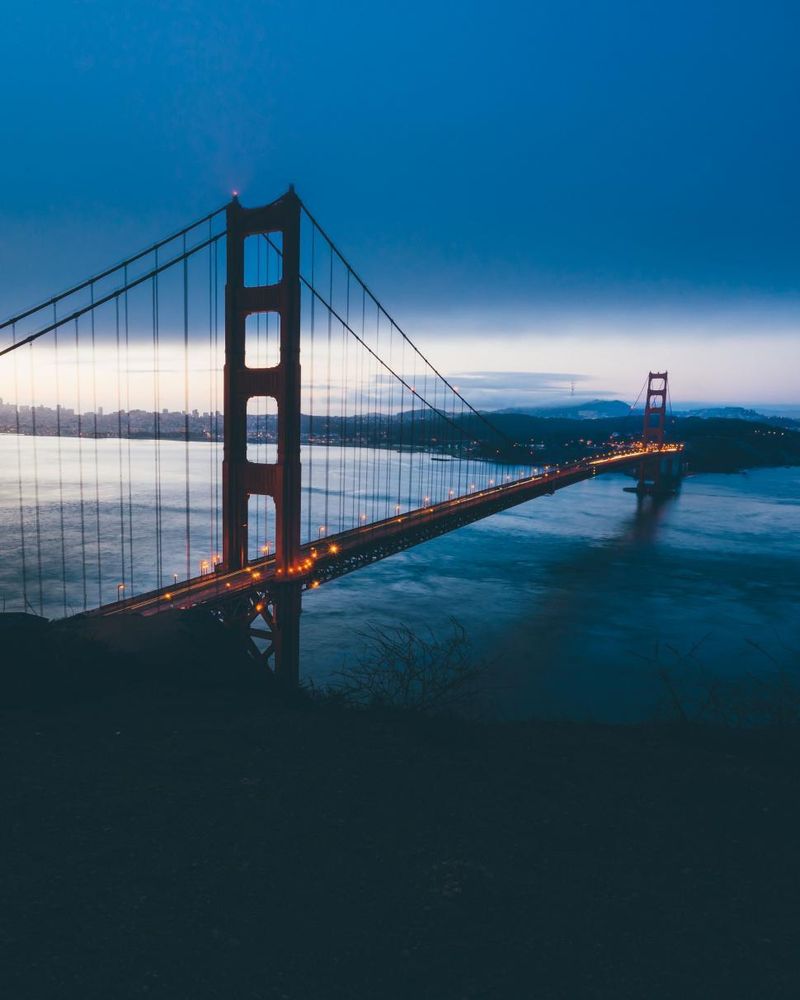
The Golden Gate Bridge, shrouded in mist, stands as a testament to human ingenuity. Its vibrant red color contrasts with the natural surroundings, creating a breathtaking view.
Opened in 1937, this Art Deco masterpiece connects San Francisco to Marin County. The bridge’s design has inspired countless artists and photographers.
Did you know? It’s a popular spot for film shoots and has appeared in numerous movies. With its towering presence and historical significance, it continues to captivate millions of visitors every year.
Tower Bridge
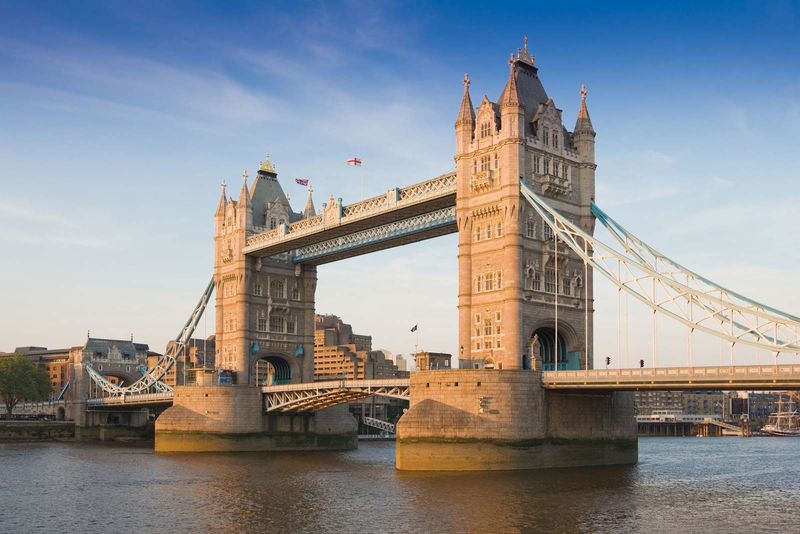
A symbol of London, Tower Bridge combines functionality with beauty. Its Victorian Gothic architecture is a nod to the city’s rich history.
Inaugurated in 1894, this drawbridge spans the Thames, opening gracefully to allow ships to pass. Visitors can enjoy panoramic views of London from its high walkways.
Fun fact: The bridge’s color scheme was originally chocolate brown but was changed to red, white, and blue for Queen Elizabeth II’s Silver Jubilee in 1977.
Brooklyn Bridge
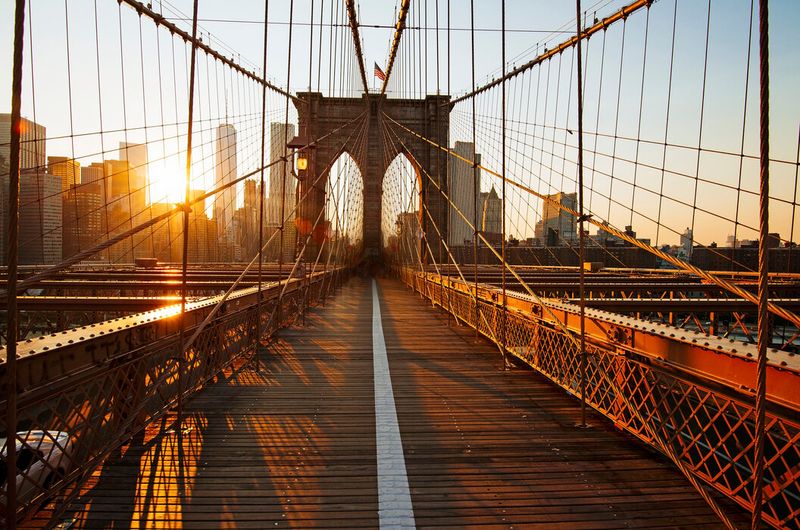
Spanning the East River, the Brooklyn Bridge connects Manhattan and Brooklyn with grace and style. As the sun rises, its intricate steel-wire design catches the light beautifully.
Opened in 1883, it was the world’s longest suspension bridge at the time. Its engineering feats set new standards for bridge construction.
Did you know? The bridge’s pedestrian walkway offers one of the best skyline views of New York City, attracting millions of tourists and locals alike.
Sydney Harbour Bridge
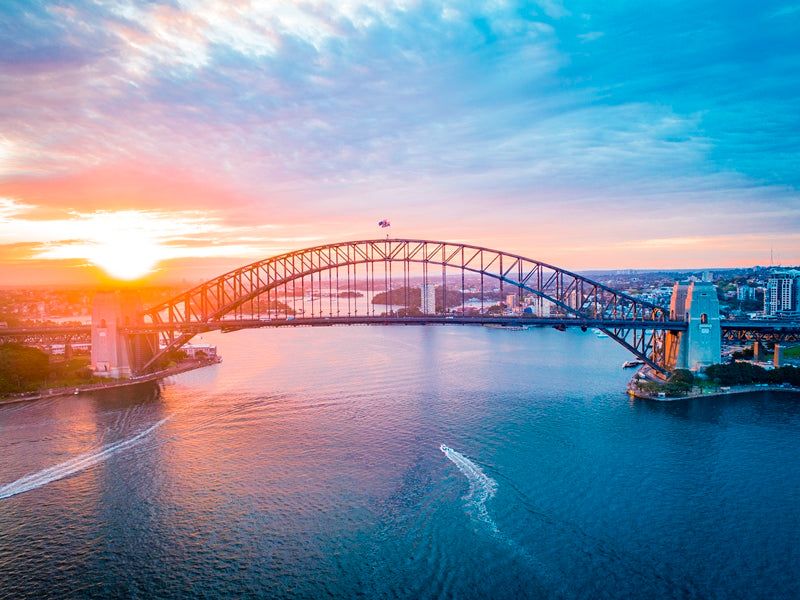
The Sydney Harbour Bridge, affectionately known as the ‘Coathanger,’ is an iconic symbol of Australia. Its massive steel arch dominates the Sydney skyline.
Completed in 1932, it connects Sydney’s central business district to the North Shore. The bridge offers stunning views of the Sydney Opera House.
Fun fact: Adventurous visitors can climb to the top of the arch for an unforgettable experience. Its robust structure and scenic location make it a favorite among photographers and tourists.
Ponte Vecchio
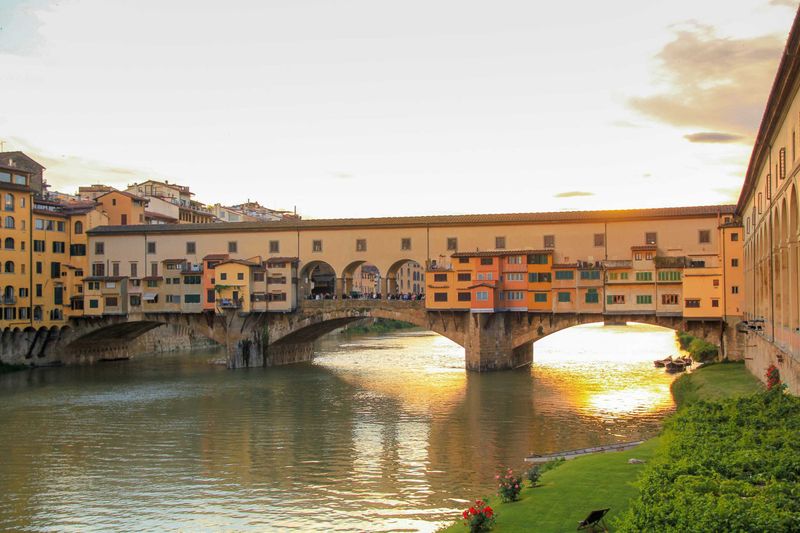
The Ponte Vecchio in Florence is a charming blend of history and commerce. Its medieval stone structure houses vibrant jewelry shops.
Built in 1345, it’s one of the few remaining bridges with shops. The bridge’s unique architecture and picturesque setting attract countless visitors.
Quirk: Legend has it that the concept of bankruptcy originated here. Merchants unable to pay their debts had their tables ‘broken,’ from which the term ‘bancorotto’ arose.
Rialto Bridge
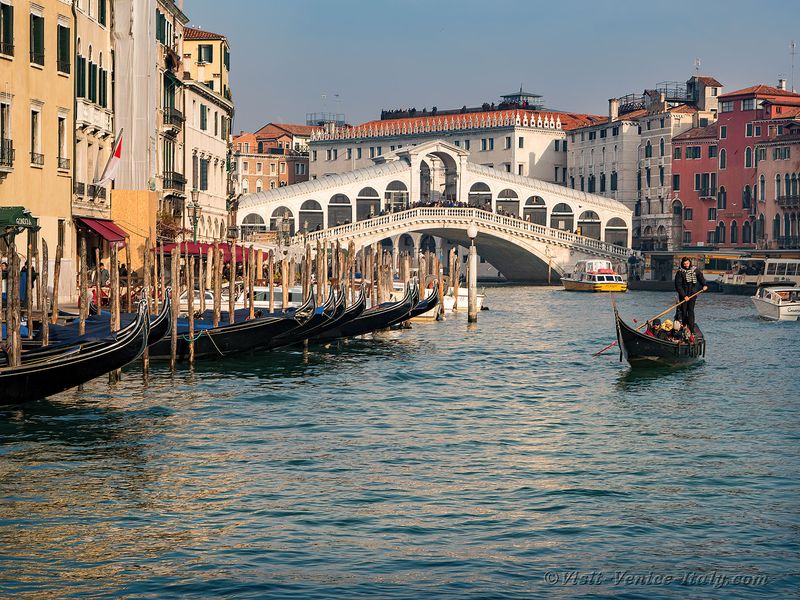
Venice’s Rialto Bridge is a masterpiece of Renaissance architecture, gracefully arching over the Grand Canal. It’s a hub of activity, with bustling markets and vibrant shops.
Constructed in 1591, the bridge connects the districts of San Marco and San Polo. Its elegant design and historical significance draw tourists from all over the globe.
Fun fact: The bridge was once the only way to cross the canal on foot. Today, it remains a vital part of Venice’s cultural and commercial life.
Akashi Kaikyō Bridge

The Akashi Kaikyō Bridge, also known as the Pearl Bridge, holds the title of the world’s longest suspension bridge. Its remarkable engineering connects Kobe to Awaji Island.
Completed in 1998, the bridge features a main span of 1,991 meters. It stands as a symbol of Japan’s commitment to innovation and technology.
Statistic: The bridge’s construction involved over 1.4 million workers and 1,800,000 tons of steel. Its scale and elegance continue to impress engineers and tourists alike.
Millau Viaduct
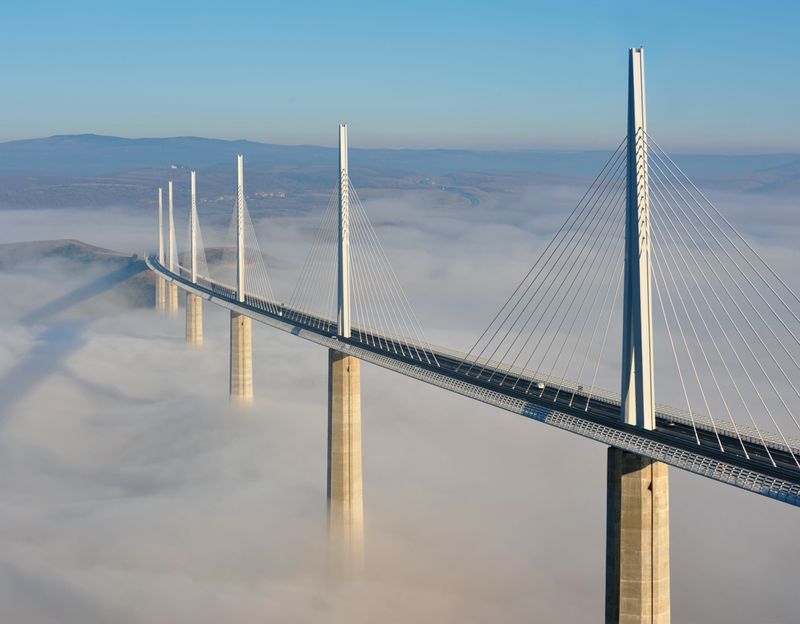
The Millau Viaduct in France is an architectural wonder, towering over the Tarn Valley. Its sleek cable-stayed design creates a futuristic silhouette.
Opened in 2004, it is the tallest bridge in the world, reaching 343 meters at its highest point. The bridge exemplifies modern engineering brilliance.
Fact: Designed by Norman Foster, the viaduct was inspired by the beauty of the surrounding landscape. Its elegance and height continue to leave onlookers in awe.
Forth Bridge
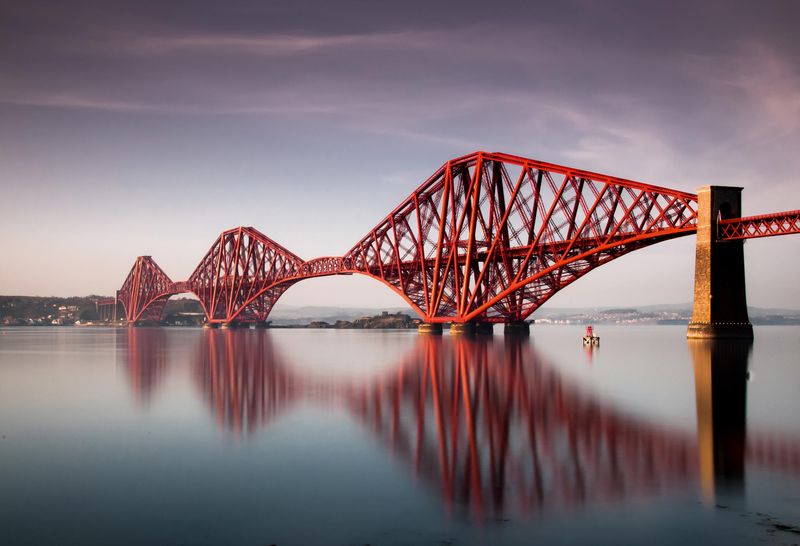
The Forth Bridge in Scotland is a marvel of Victorian engineering, known for its striking red color and robust structure. It serves as a vital railway link across the Firth of Forth.
Completed in 1890, the bridge was a pioneering effort in cantilever design. Its historical significance has earned it UNESCO World Heritage status.
Did you know? The bridge’s maintenance is an ongoing task, often described as ‘like painting the Forth Bridge,’ meaning a never-ending job.
Pont Alexandre III
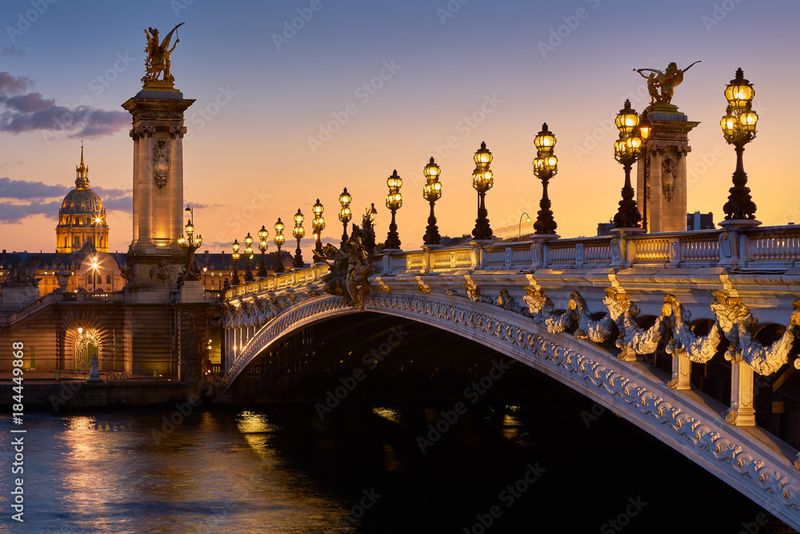
Pont Alexandre III in Paris epitomizes grandeur and elegance. Its Beaux-Arts architecture is adorned with ornate lampposts and sculptures.
Inaugurated in 1900, the bridge connects the Champs-Élysées to the Eiffel Tower area. Its artistic charm makes it a favorite among locals and tourists.
Quirk: The bridge was named in honor of Tsar Alexander III and symbolizes Franco-Russian friendship. Its opulent design continues to capture the romantic spirit of Paris.
Chapel Bridge
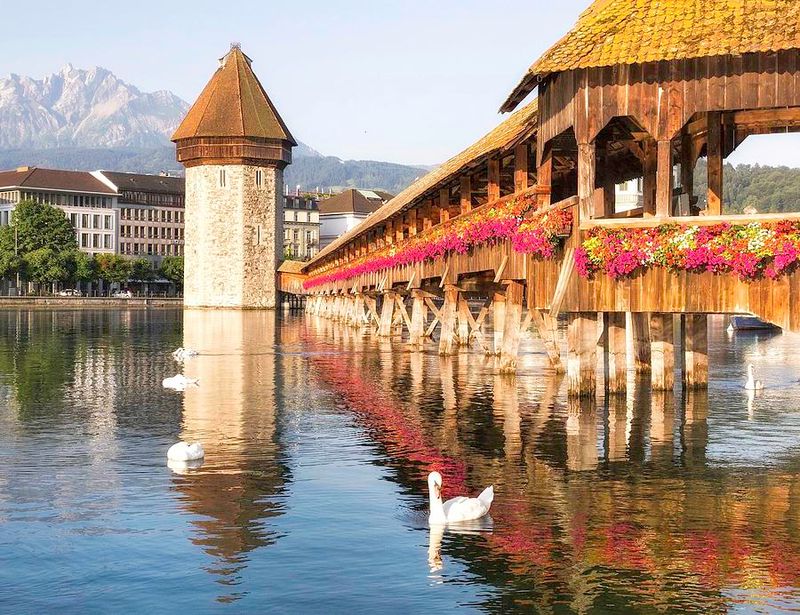
Chapel Bridge in Lucerne, Switzerland, is a delightful sight with its colorful flower boxes and iconic water tower. This medieval wooden bridge is a testament to Lucerne’s history.
Built in 1333, it is Europe’s oldest covered bridge. The bridge was partially restored after a fire in 1993, preserving its cultural significance.
Trivia: Inside the bridge, a series of paintings depict important events in Swiss history. Its picturesque beauty and historical value attract visitors year-round.
Stari Most
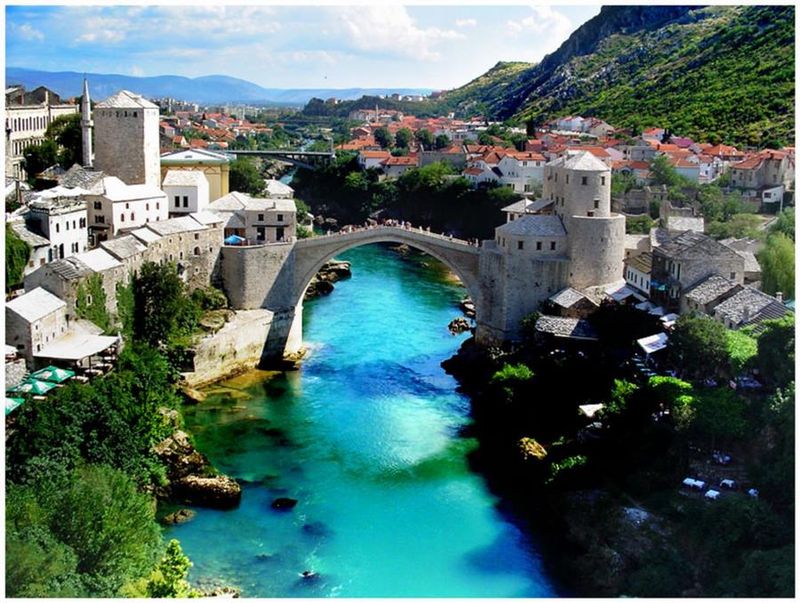
Stari Most in Mostar is a stunning example of Ottoman architecture, gracefully arching over the Neretva River. Its elegant design and historical significance are captivating.
Originally built in the 16th century, the bridge was reconstructed after being destroyed in 1993. It symbolizes resilience and unity for the people of Mostar.
Fun fact: The bridge is famous for its cliff diving tradition, where local divers showcase their skills to the delight of spectators.
Puente de la Mujer
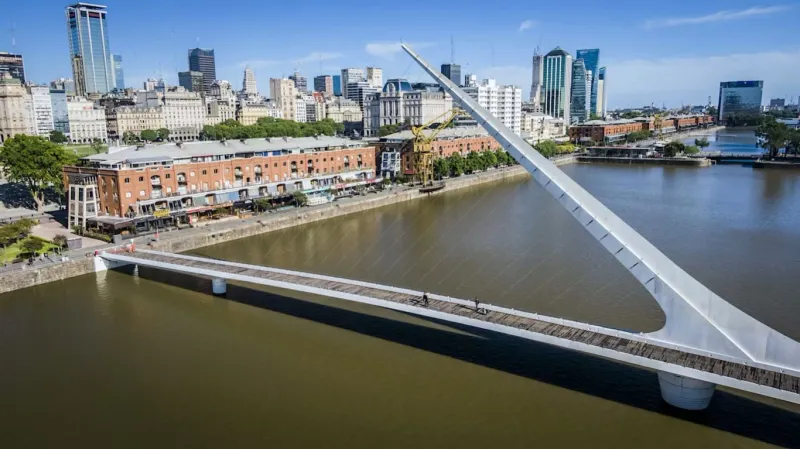
Puente de la Mujer in Buenos Aires is a modern work of art, characterized by its asymmetrical design and sleek white appearance. It gracefully spans the Puerto Madero waterfront.
Inaugurated in 2001, it’s a pedestrian bridge that symbolizes the tango dance. Its unique shape and artistic flair make it a cultural landmark.
Trivia: Designed by Santiago Calatrava, the bridge rotates to allow the passage of boats, showcasing ingenuity in its engineering.
Erasmus Bridge
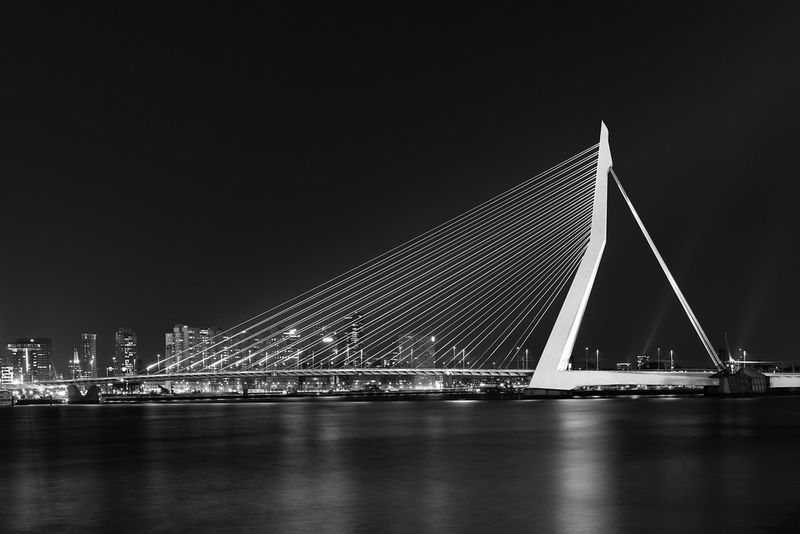
Known as the ‘Swan,’ the Erasmus Bridge in Rotterdam is an icon of modern design. Its elegant cable-stayed structure resembles a graceful swan.
Completed in 1996, it connects the northern and southern parts of the city. The bridge has become a symbol of Rotterdam’s innovative spirit.
Fun fact: The bridge is a popular venue for cultural events and celebrations. Its striking silhouette against the cityscape is a photographer’s delight.
Confederation Bridge
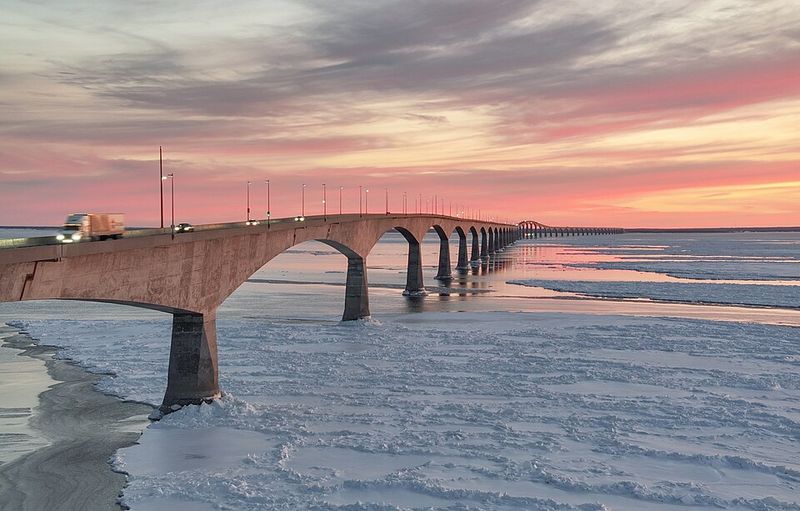
The Confederation Bridge, linking Prince Edward Island to mainland Canada, is a monumental engineering achievement. Its long, arched spans traverse the icy waters of the Northumberland Strait.
Opened in 1997, it is the world’s longest bridge over ice-covered waters, stretching 12.9 km. The bridge represents a critical connection for the region’s residents and economy.
Fact: The bridge took four years to build and involved extensive environmental planning. Its grandeur and practicality continue to impress travelers.
Verrazzano-Narrows Bridge
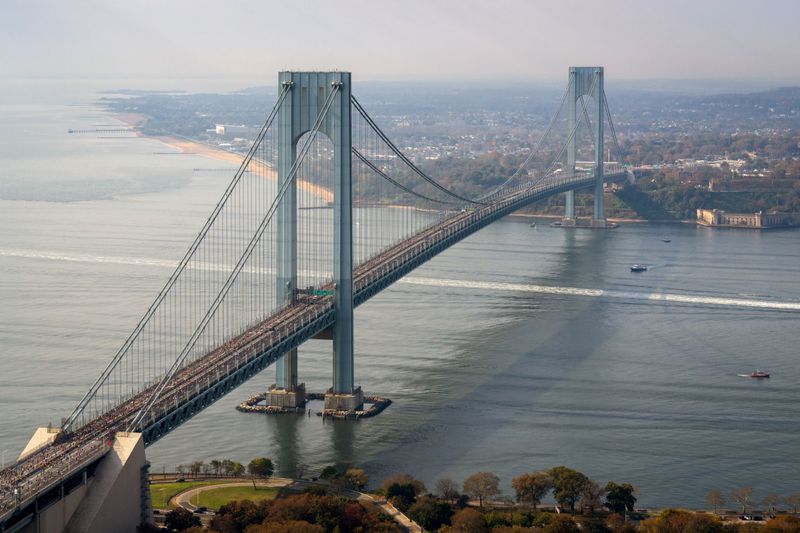
The Verrazzano-Narrows Bridge is a majestic double-decked suspension bridge connecting Staten Island to Brooklyn. Its expansive structure spans the iconic New York Harbor.
Opened in 1964, it was once the world’s longest suspension bridge. The bridge remains a critical part of New York’s transportation network.
Quirk: The bridge is a key feature in the annual New York City Marathon, serving as the starting point for thousands of runners.
Ponte Sant’Angelo
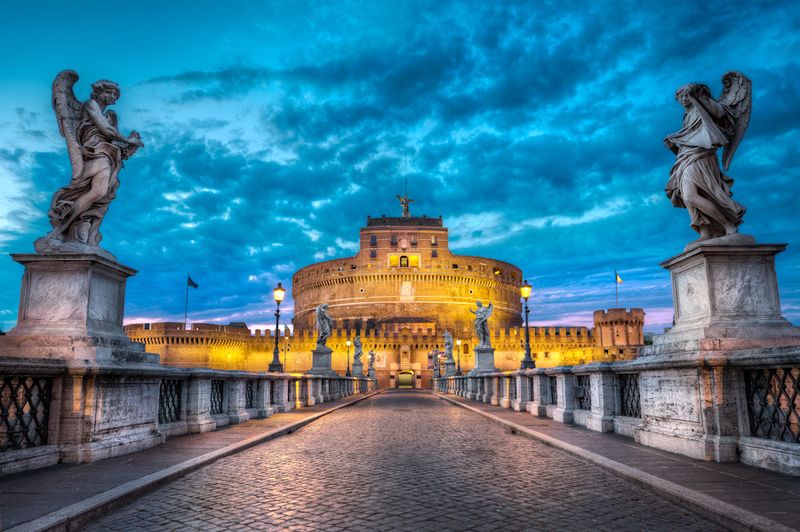
Ponte Sant’Angelo in Rome is a masterpiece of Baroque art, adorned with ten angel statues designed by Bernini and his students. The bridge elegantly crosses the Tiber River.
Commissioned by Emperor Hadrian in 134 AD, it leads to the majestic Castel Sant’Angelo. The bridge’s artistic grandeur and historical roots draw visitors from around the world.
Trivia: The angel statues each hold an instrument of the Passion, adding to the bridge’s spiritual and artistic significance.
Öresund Bridge
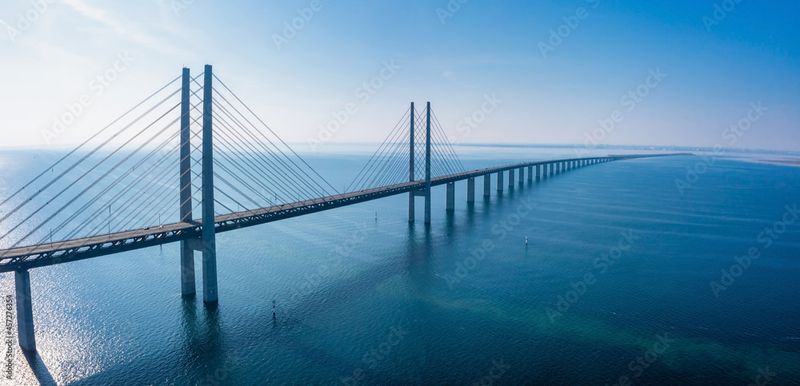
The Öresund Bridge is a marvel of modern engineering, linking Sweden and Denmark across the Öresund Strait. Its sleek cable-stayed structure cuts a striking figure against the sea.
Opened in 2000, the bridge stretches over 16 km, facilitating easy travel between the two countries. Its design symbolizes Scandinavian cooperation and innovation.
Fact: The bridge is part of a larger fixed link that includes an underwater tunnel, showcasing a blend of engineering techniques.
Juscelino Kubitschek Bridge
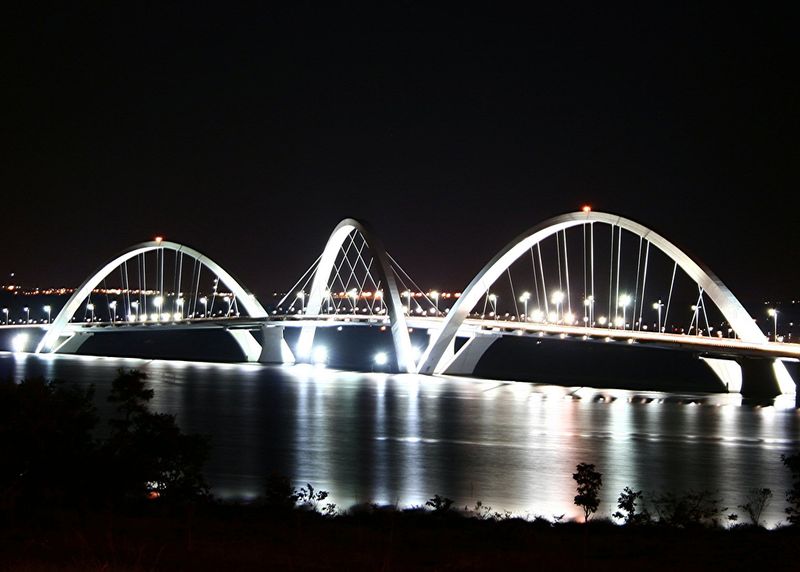
The Juscelino Kubitschek Bridge in Brasilia is an artistic marvel, featuring three asymmetrical arches that span Lake Paranoá. Its modern design lights up beautifully at night.
Inaugurated in 2002, the bridge is named after Brazil’s former president. It serves as a vital link for the city while adding to its architectural charm.
Trivia: The flowing lines of the bridge are meant to evoke the path of a skipping stone, blending art with utility.
Bosphorus Bridge
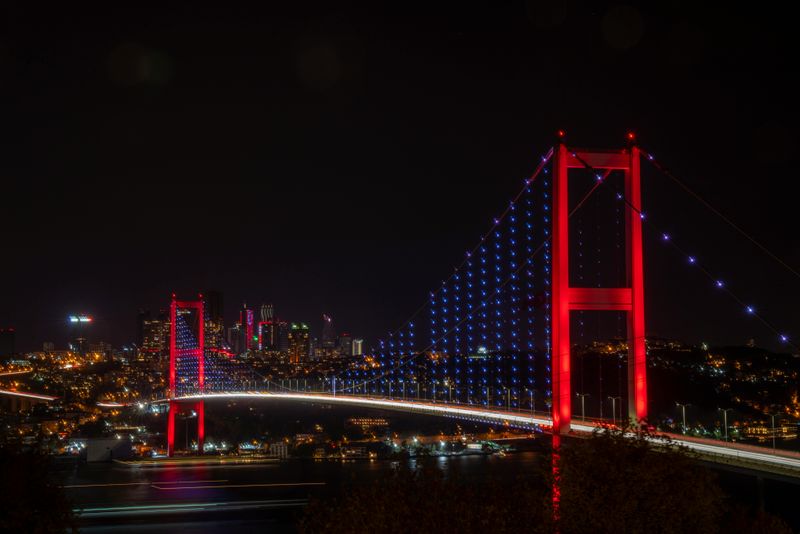
The Bosphorus Bridge in Istanbul stands as a symbol of unity, connecting Europe and Asia over the Bosphorus Strait. Its impressive suspension design is a marvel.
Completed in 1973, the bridge facilitates the flow between two continents. It plays a crucial role in Istanbul’s transport infrastructure.
Fun fact: The bridge hosts an annual marathon where runners can boast they’ve traversed two continents in one race. Its illuminated beauty captivates visitors at night.
Humber Bridge
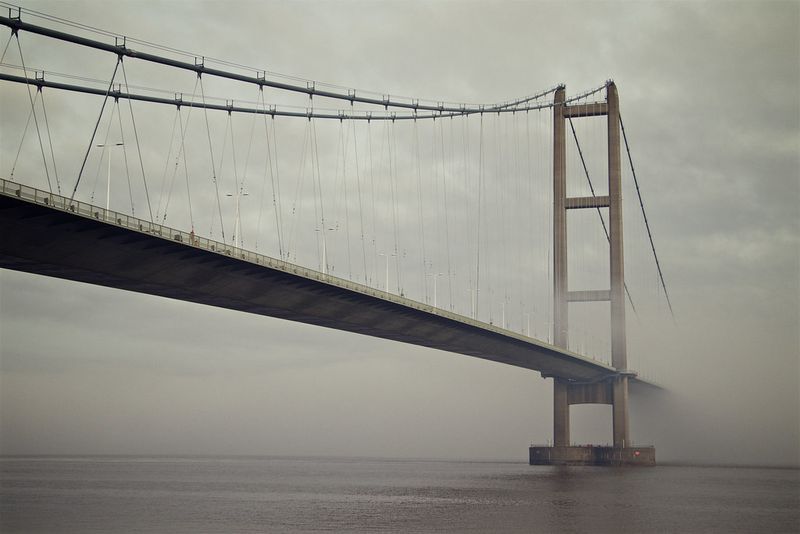
The Humber Bridge in the UK is a feat of engineering, once holding the record for the longest single-span suspension bridge. It elegantly spans the Humber Estuary.
Opened in 1981, it connects East Yorkshire to North Lincolnshire, playing a vital role in the region’s connectivity. The bridge’s sweeping curves and stunning vistas inspire awe.
Quirk: The bridge is often shrouded in mist, adding a mystical quality to its impressive silhouette.
Vasco da Gama Bridge
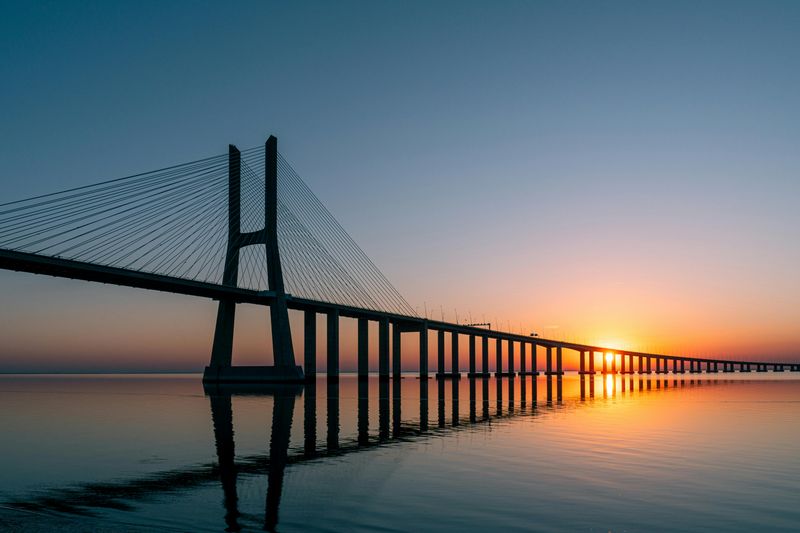
The Vasco da Gama Bridge in Lisbon is an impressive structure, stretching over 17 km across the Tejo River. It’s the longest bridge in Europe, a testament to architectural ambition.
Opened in 1998, the bridge enhances connectivity within Portugal. Its elegant design and scenic surroundings make it a popular photographic subject.
Fact: The bridge was named after the famous explorer Vasco da Gama, commemorating the 500th anniversary of his voyage to India.
Qingdao Haiwan Bridge
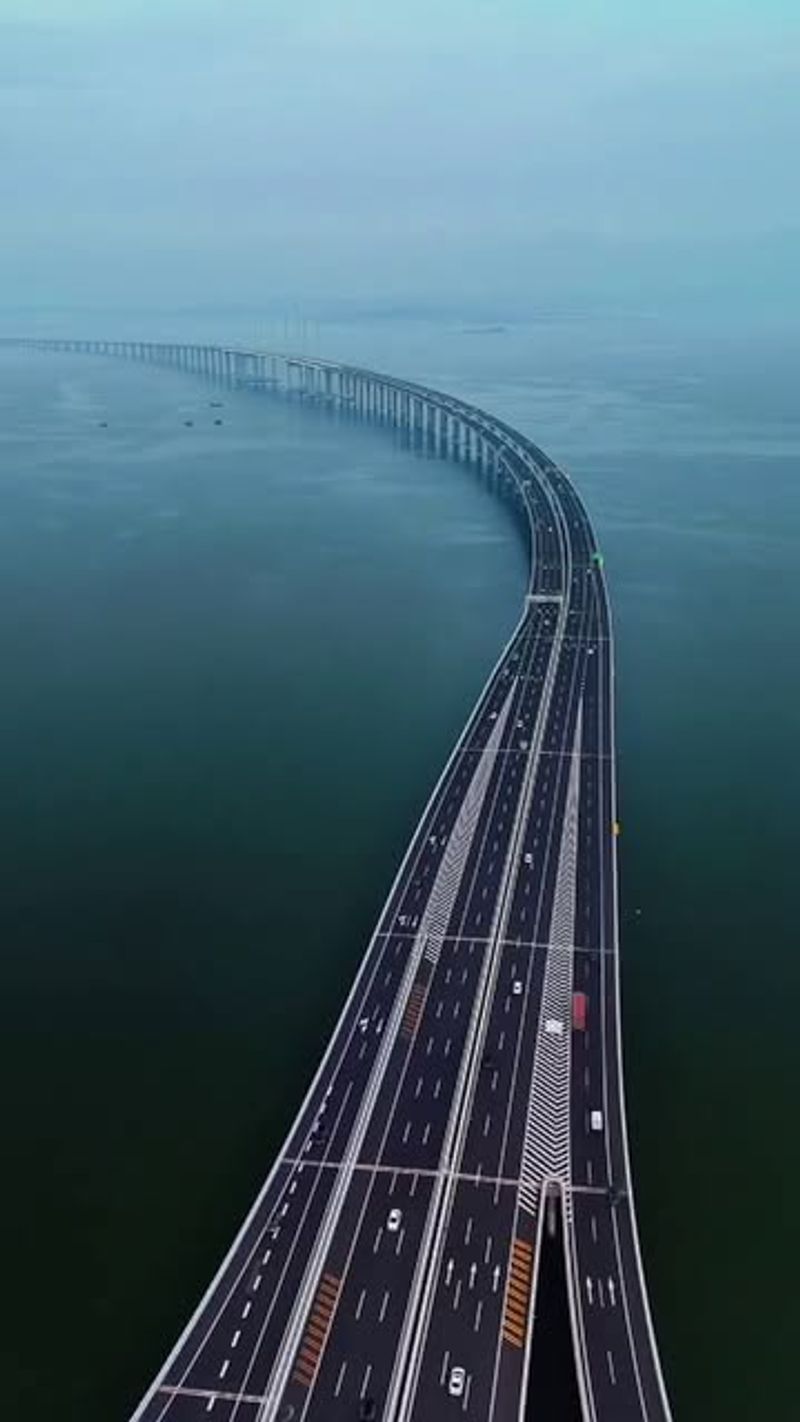
The Qingdao Haiwan Bridge in China is a monumental achievement, holding the title as one of the longest sea bridges in the world. Its vast expanse connects Qingdao to Huangdao.
Completed in 2011, the bridge spans over 41 km, showcasing China’s prowess in modern engineering. The bridge plays a crucial role in the region’s development.
Fun fact: The project involved over 10,000 workers and used enough steel to construct 65 Eiffel Towers, illustrating its immense scale.
Capilano Suspension Bridge
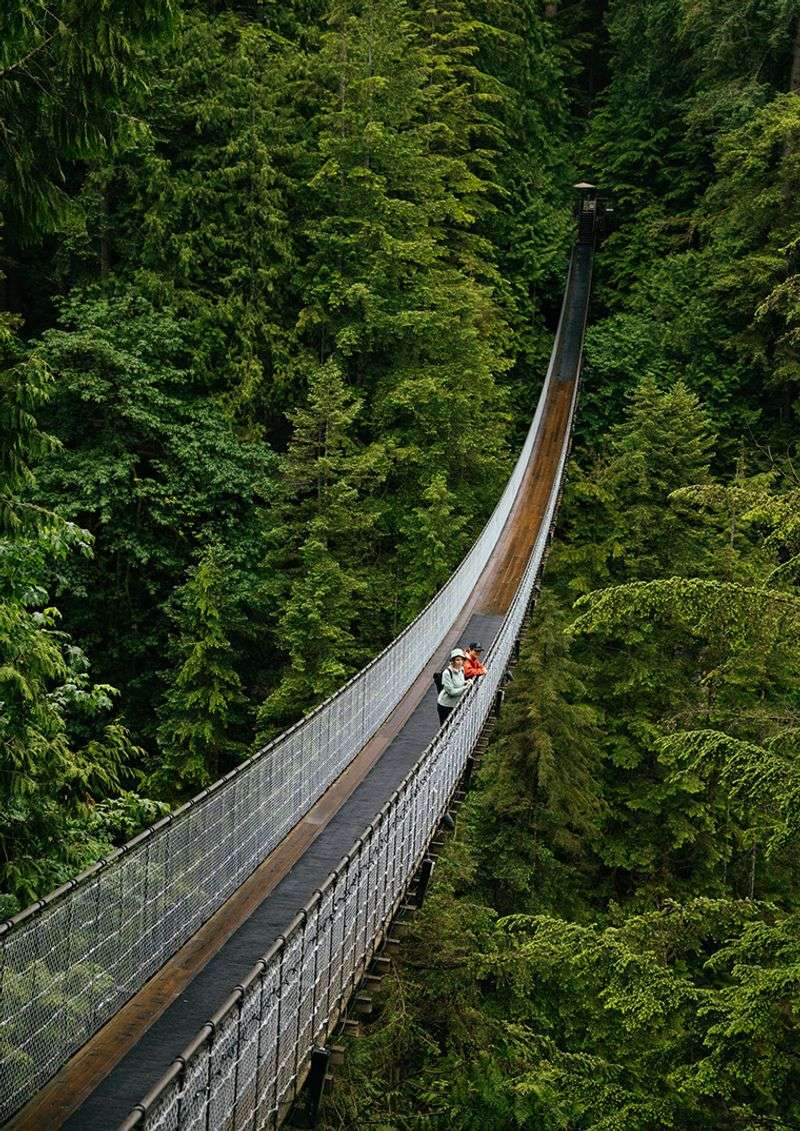
The Capilano Suspension Bridge in Vancouver offers an exhilarating experience, swaying gently above a lush forest canopy. It’s a thrilling adventure for nature lovers.
Originally built in 1889, the bridge has been a popular tourist attraction for decades. Its scenic location and rustic charm appeal to visitors of all ages.
Quirk: The bridge is part of a larger park that includes treetop walks and cliffside paths, enhancing the outdoor experience.
Langkawi Sky Bridge
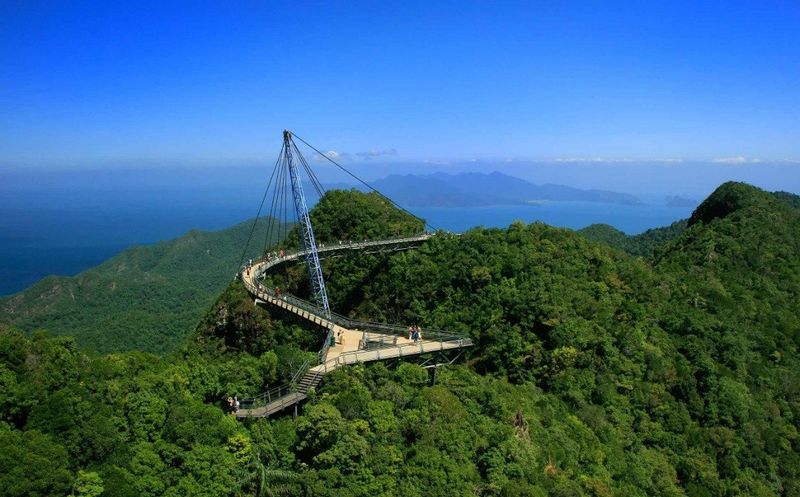
The Langkawi Sky Bridge in Malaysia offers a breathtaking experience with its curved walkway suspended high above the mountains.
Opened in 2005, it provides visitors with stunning views of the surrounding landscapes. The bridge’s sleek design and dramatic setting make it a popular tourist attraction.
Quirk: The bridge can sway slightly in the wind, adding an element of excitement to the already thrilling walk.
Ponte Vecchio
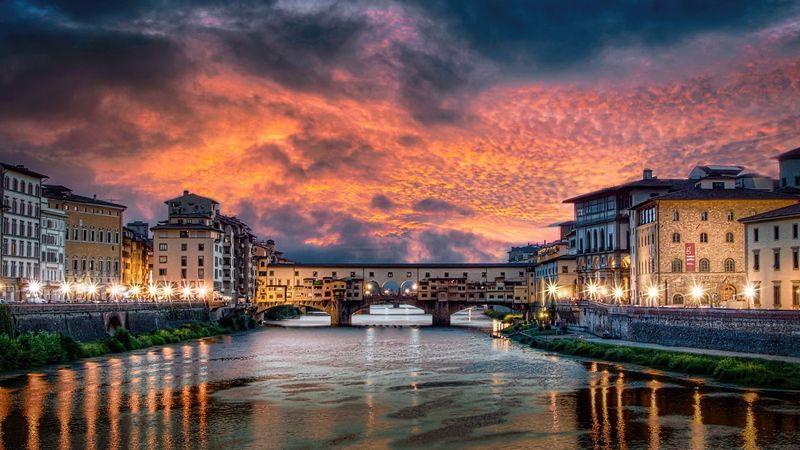
Standing since the Roman times, the Ponte Vecchio in Florence is a testament to time’s passage and human creativity. This medieval stone bridge is famously adorned with shops, a practice dating back to the 13th century. Historically, it housed butchers and tanners, but today it’s a haven for jewelers and art dealers.
The bridge’s resilience is legendary, having survived numerous floods, including the catastrophic one in 1966. A stroll across offers a glimpse into Florence’s vibrant history and its bustling modern life. It’s an enduring symbol of economic and cultural exchange.
Did you know? The Ponte Vecchio was the only bridge in Florence not destroyed during World War II, as per Hitler’s orders.
Rialto Bridge
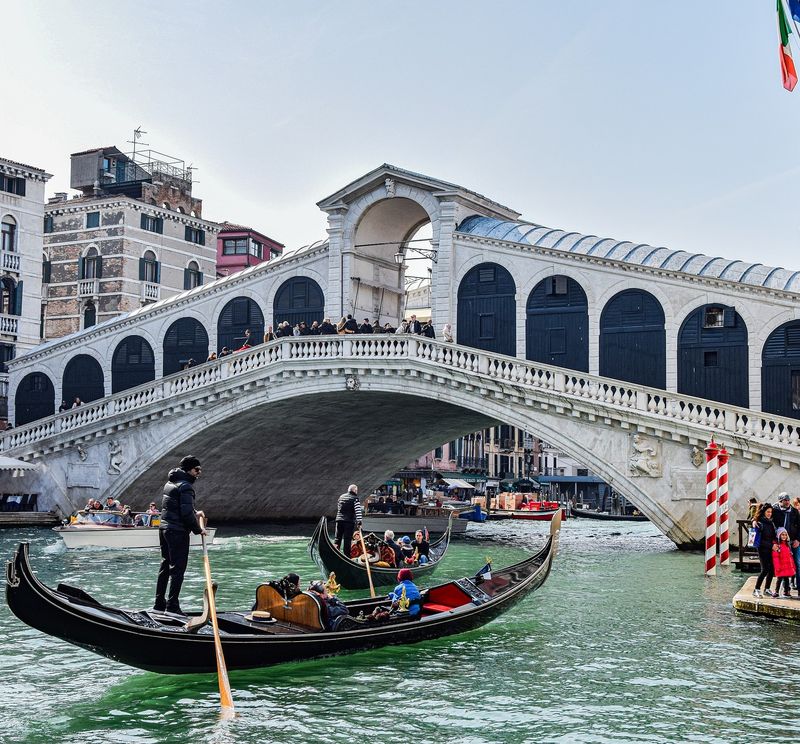
The Rialto Bridge is Venice’s oldest bridge across the Grand Canal, and one of the city’s most famous icons. Completed in 1591, this stone arch bridge was an architectural and engineering feat of its time, replacing a wooden version that collapsed.
Lined with shops, it remains a vital commercial center, echoing its original purpose. Crossing the bridge, one is enveloped by the charm of Venetian life, with bustling crowds and vibrant markets.
A unique feature is its design, which allows gondolas to glide seamlessly beneath. The bridge’s elegance is matched by its historical significance, making it a must-see in Venice.
Akashi Kaikyō Bridge
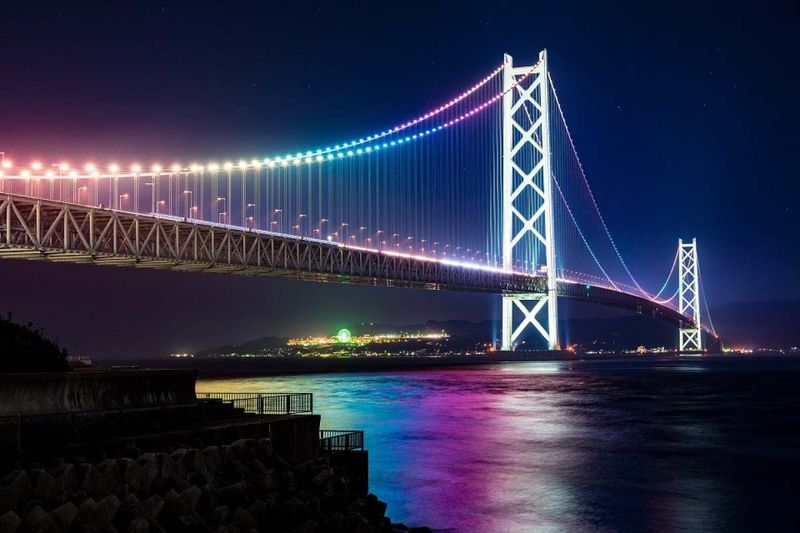
Known as the Pearl Bridge, the Akashi Kaikyō Bridge in Japan is the longest suspension bridge in the world, stretching an impressive 3,911 meters. Completed in 1998, it connects Kobe to Awaji Island, providing a vital transportation link.
The bridge was engineered to withstand harsh weather and seismic activity, a necessity in this earthquake-prone region. Its beauty lies not just in its grandeur but also in its innovative design and engineering excellence.
Fun fact: The bridge’s construction was altered after the 1995 Kobe earthquake, which shifted its towers apart by one meter, a testament to its resilient design.


